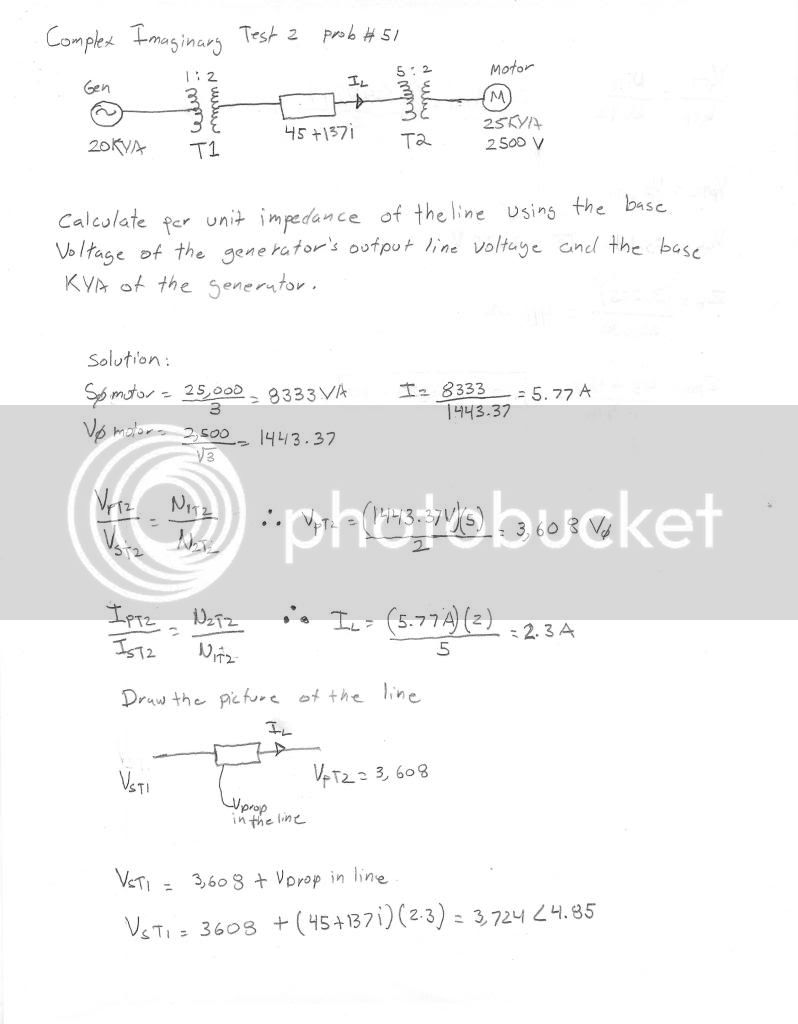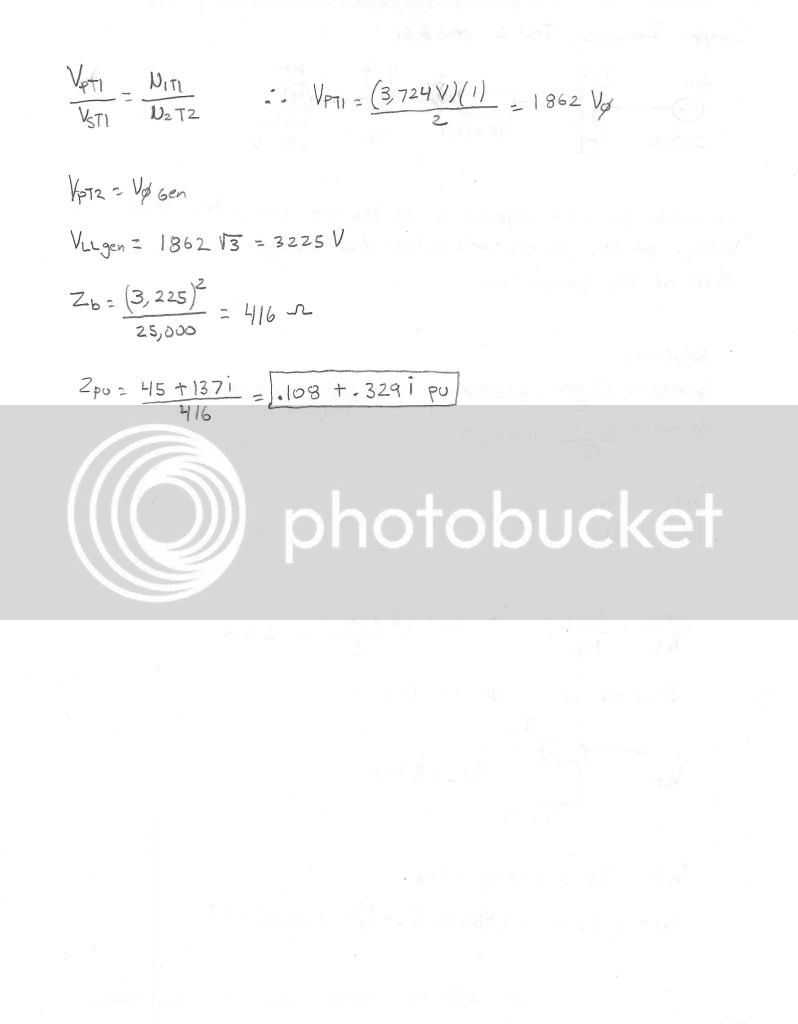Wildsoldier PE
Well-known member
- Joined
- Aug 19, 2010
- Messages
- 290
- Reaction score
- 14
In this problem the voltage of the generator was not given. The way the problem was made makes it a very lonnngg problem... In the solutions they didn't count the Voltage drop in the line to get the output voltage of the generator which i think that to get the accurate generator voltage the voltage drop in the line needs to be counted. Attached is the way I worked this problem which took me like 12 minutes or more to solve. The solution using my way is not in the answers.


Let me know what you think!


Let me know what you think!



